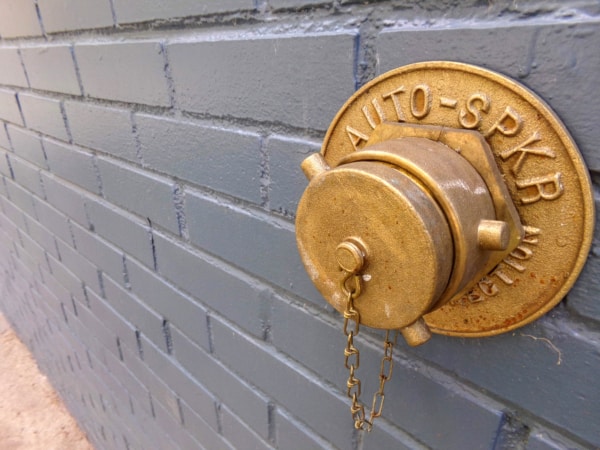Carefully chosen fire department connection plugs can deter theft while protecting FDCs against vandalism and misuse
A fire department connection, or FDC, is a critical piece of fire equipment. But without a plug, an FDC can quickly be turned into a trash can, a target of vandalism, a rusted amalgam of metal, and a dangerous liability to building owners and occupants alike.
In this article, we explain when a fire department connection plug is a better choice than the go-to alternative—a breakable cap. Then, we provide consumers with need-to-know guidance on plug sizing, selection, and installation.
If your FDC is in dire need of protection, you can also browse our selection of fire department connection plugs, and other essential FDC fire equipment now.
Unprotected fire department connection inlets can render a fire sprinkler or standpipe system inoperable
Fire department connections provide firefighters with a way to supply water to two types of water-based fire protection systems: standpipe systems, which act as indoor fire hydrants, and fire sprinkler systems that may need the water supply augmented. In an emergency, a fire hose can carry water from an external source to the FDC. And there, water enters pipes within the building.
To facilitate that connection between a fire hose and a piping system, each FDC features at least one inlet (and often more). To keep the hose in place, the inlet may feature a threaded swivel—typically with a standardized thread type called National Standard Thread or National Hose (NST or NH)—or a threadless hose connection. Either way, water typically flows through the inlets to the FDC’s metal body, and from the body to the pipes. Then, it passes through pipes to a check valve, which prevents water from flowing back upstream. And finally, water reaches the supply pipes responsible for delivering water to the fire sprinkler or standpipe system.
Most fire department connections are located outdoors—and that’s where the trouble lies. Dirt, corrosion, and ice can make forming a secure connection between hoses and inlets difficult. Garbage placed in an open inlet can prevent water from entering pipes. Debris may stop the check valve from closing, allowing water to flow into the street. Worse yet, obstructions may travel downstream, where they eventually become lodged above fire sprinkler heads, in the narrower pipes that distribute water throughout the building, or even in the main supply lines feeding the entire system.
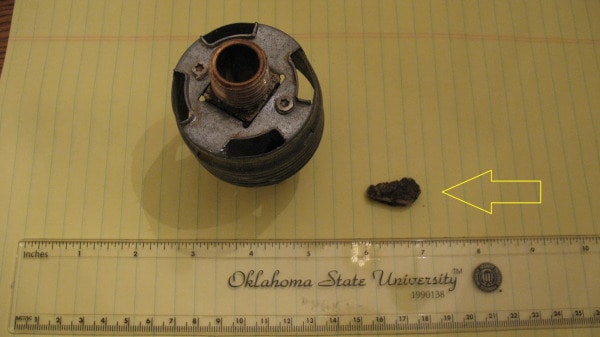
NFPA standards for fire sprinkler and standpipe systems show no preference for FDC plugs or caps
Many state and local fire codes—including those based on standards developed by the National Fire Protection Association (NFPA)—require that fire department connection inlets be protected against intrusion of foreign materials. However, the exact method of protection isn’t specified. NFPA 13: Standard for the Installation of Sprinkler Systems requires fire protection contractors to install one of two inlet covers on an FDC: plugs or caps. (For standpipe systems, an identical provision can be found in the 2019 edition of NFPA 14: Standard for the Installation of Standpipe and Hose Systems in section 4.8.3.)
From the 2022 edition of NFPA 13
16.12.3.2 Fire department connections shall be equipped with approved plugs or caps, properly secured and arranged for easy removal by fire departments.
What’s the difference between an FDC plug and a cap? Though the terms are sometimes mixed up, on fire department connections using threaded inlet swivels, a plug screws into a swivel. A cap, on the other hand, sits on the outside of it. To disengage a threaded plug, a firefighter must generally turn the plug several full rotations. Caps, however, detach with a blow from a wrench or the butt of an ax.
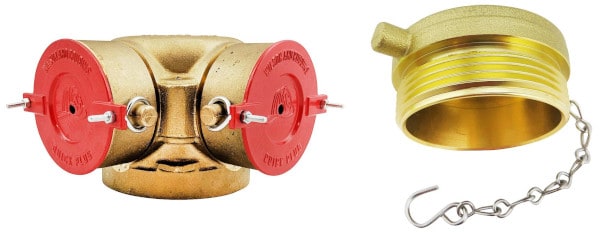
Plugs only apply to FDCs with threaded hose connections. Those with Storz fittings (a type of quick-connect fitting that does not use threads) press against each other and turn rather than threading into each other. As such, FDCs with threadless Storz connections only use specially designed caps.
Fire departments may favor FDC plugs because they’re more difficult to remove, and some types may be less theft-prone
One fire department plug costs roughly four times as much as a pair of breakable caps. So, why don’t installers and building owners always stick with the lowest-cost solution? One example comes from a 2016 standard issued by the San Bernadino County Fire Department (CA), which illustrates how fire officials sometimes favor plugs over caps:
All hose connections on FDCs shall be of National Standard Hose Thread (NH or NST) and shall be provided with threaded plugs (plastic or brass) to protect the FDC connection. Break-away metal caps may be used when the FDC is located in secured areas that are not subject to vandalism. If required by the fire code official because of concerns of vandalism, threaded locking plugs (Knox Plugs) shall be provided on all inlets, secured with a chain.
Unfortunately, most of our customers report that theft, and not vandalism, is why they’re ordering a certain type of cap or plug. Rules like the one issued in San Bernadino County sometimes specify a preference for plugs but address the problems of abuse and theft by making plugs harder to steal in the first place.
There’s another alternative, however: choosing plugs that are less sought after by thieves. Climbing metal prices correlate with increased thefts—and not all metals have the same value. Back in August 2019, scrap metal buyers listed brass at roughly $1.25-$1.50 per pound, aluminum at $0.25-$1, and iron at prices under $0.15. Aluminum or cast iron FDC plugs can make a less tempting target for thieves.
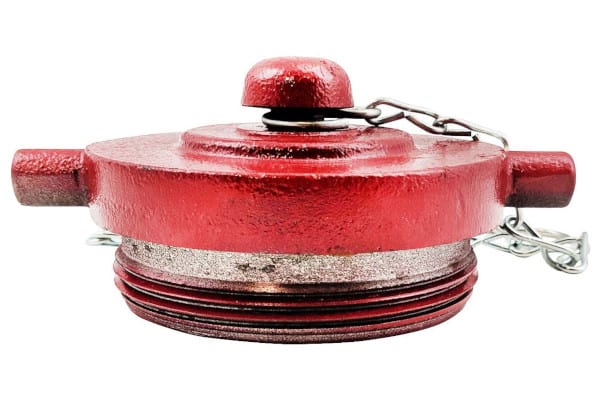
Careful sizing and installation are required when replacing a fire department connection plug
Many jurisdictions use fire hoses, FDCs, and other fire equipment with 2 1/2″ NST or NH connections. However, not all do—San Francisco or New York, for example, use 3″ FDCs. And cities as varied as Cleveland, Denver, and Louisville each use their own specialized hose threads. (For a more comprehensive look at cities using unique thread standards, see our list of common and uncommon thread types.)
But in most buildings, an FDC needs a 2 1/2″ plug. As we’ve explained in our take on frequently asked FDC questions, purchasers often get this measurement wrong. 2 1/2″ represents the inside diameter of the inlet where the threads of the plugs fasten. It’s not the space between threads—and not the outside diameter of the swivel.
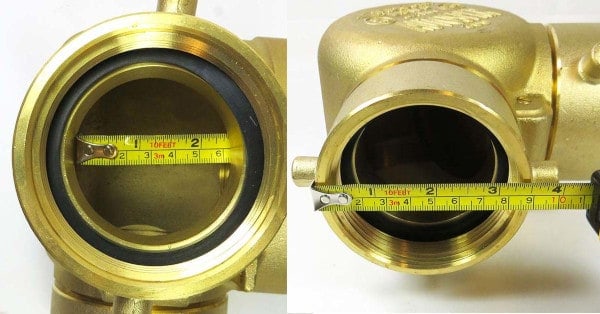
Installing one of these fire department connection plugs is simple, provided that consumers:
- Remove the old plug, cap, and/or eye bolts
- Look for and remove any debris visible in the piping
- Fasten the FDC plug by hand until snug, and then tighten with a wrench
- Attach the plug’s chain to the identification plate or another secure location
Plugs provide affordable protection for FDCs and the fire protection systems they serve
Plugs have long provided a cost-effective defense against the threats fire department connections face. If you’re in the market for a new plug, QRFS carries a variety of brass, aluminum, and cast-iron models for 2 1/2″ NST fire department connections and the 3″ FDCs found in New York City.
Fire department connection plugs for San Francisco, Chicago, and other cities are available by special order—call us at (888) 361-6662 or email support@qrfs.com.

Browse our full selection of FDC plugs.
This blog was originally posted by Jason Hugo and Cameron Sharp at blog.qrfs.com on June 30, 2016, and updated on February 7, 2022. If you like what you’ve read, check us out at Facebook.com/QuickResponseFireSupply or at Twitter @QuickResponseFS.


